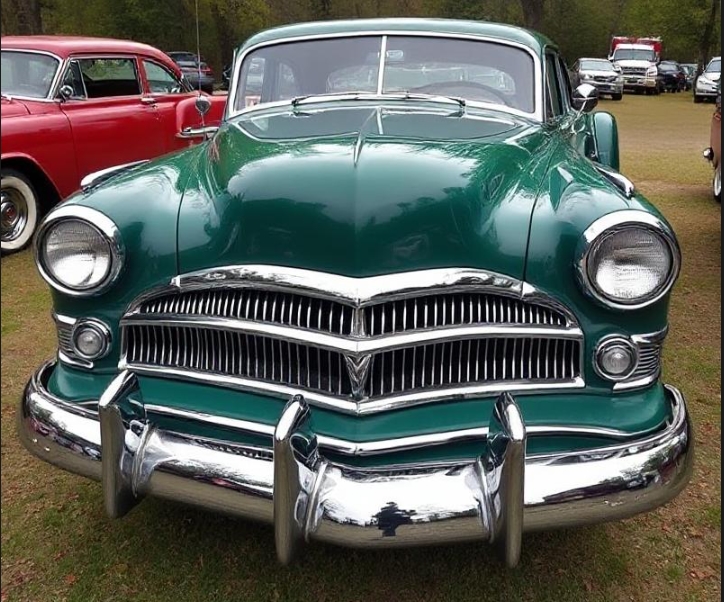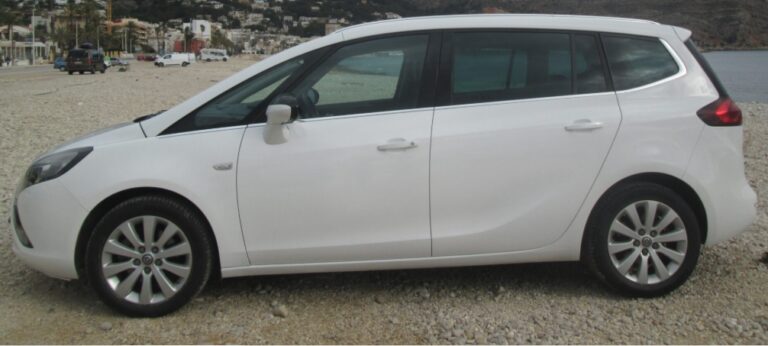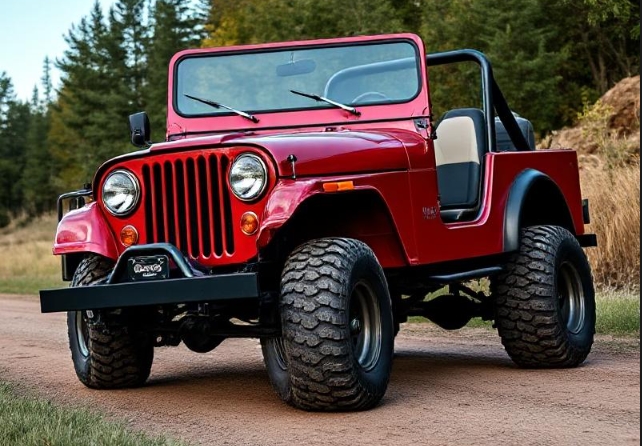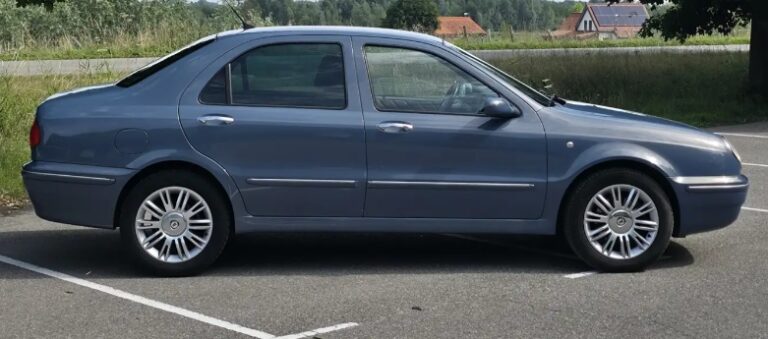The Great Leap Forward: Charting the Evolution from Holden FJ to FE
In the annals of Australian automotive history, few transitions are as significant as the leap from the Holden FJ to the FE. It was more than a simple model update; it was a profound cultural and technological shift that mirrored Australia’s own journey from post-war austerity to burgeoning suburban prosperity. While the FJ cemented Holden as Australia’s own car, the FE redefined what that car could be, transforming it from a rugged, utilitarian workhorse into a stylish, modern family vehicle. This is the story of that pivotal evolution, a tale of two distinct eras in Australian motoring.
The End of an Era: The Holden FJ (1953-1956)
To understand the revolutionary nature of the FE, one must first appreciate the car it replaced: the venerable Holden FJ. Launched in October 1953, the FJ was not a new car but rather a clever and timely facelift of Australia’s first mass-produced automobile, the 48-215 (popularly known as the ‘FX’). The 48-215, with its pre-war American styling and robust simplicity, had been a phenomenal success, perfectly suited to the tough conditions and practical needs of a nation rebuilding after World War II.
The FJ’s mission was to modernise this proven formula without altering its core strengths. The fundamental “humpy” bodyshell, with its bulbous guards and high roofline, remained unchanged. The evolution was primarily cosmetic. The most noticeable difference was the aggressive, toothy grille, a wide expanse of vertical chrome bars that gave the car a more imposing presence than the subtle grille of its predecessor. Additional chrome trim adorned the body, including a distinctive rocket-shaped spear on the rear mudguards of the upmarket model. The interior received a makeover with a new instrument cluster, a modern steering wheel, and more comfortable seating.
Mechanically, the FJ was virtually identical to the 48-215. It was powered by the same legendary 132.5 cubic inch (2.2-litre) overhead-valve straight-six engine, affectionately known as the “Grey Motor.” Producing a modest 60 brake horsepower, it was mated to a three-speed, column-shift manual gearbox. The car ran on an antiquated but reliable 6-volt electrical system, which meant headlights were dim by modern standards and the starter motor could labour on cold mornings.
Despite its aging underpinnings, the FJ was an immense commercial success, consolidating Holden’s market dominance. It expanded the brand’s reach by offering a wider range of models and trim levels, catering to a broader cross-section of Australian society.
.
THIS is GOOD stuff if your car is in need:

.
Holden FJ Models and Trim Levels (1953-1956):
- Standard Sedan: The base model, aimed at fleet buyers and budget-conscious families. It had minimal chrome trim, basic vinyl upholstery, and rubber floor mats. It was the no-frills workhorse of the range.
- Business Sedan: A variation of the Standard, designed for commercial travellers. It was essentially a Standard but lacked a rear seat, providing a vast cargo area behind the driver. This model was less common and was eventually phased out.
- Special Sedan: The most popular and aspirational model. The Special was distinguished by a wealth of additional chrome trim, including window surrounds, body mouldings, and the aforementioned rear-guard spear. Inside, it featured superior upholstery (often a combination of vinyl and patterned cloth), front and rear armrests, a passenger-side sun visor, and other small creature comforts. It was the FJ that suburban families aspired to own.
- Utility: Released in early 1953 as part of the 48-215 range but continuing through the FJ era, the Holden “Ute” was a uniquely Australian invention. It combined the passenger cabin of the sedan with an integrated steel tray back, becoming an indispensable tool for farmers and tradespeople.
- Panel Van: Following the Utility, the Panel Van featured a large, enclosed cargo area, making it the vehicle of choice for delivery businesses, electricians, plumbers, and Australia Post.
The FJ sold over 169,969 units in just over three years. It became a cultural icon, the quintessential Australian car of the mid-1950s. But by 1956, its 1940s design was looking tired. International competitors, particularly the Ford Consul and Zephyr, were offering sleeker, more modern styling. Australia was changing, and Holden had to change with it.
The Dawn of a New Age: The Holden FE (1956-1958)
On July 20, 1956, General Motors-Holden’s unveiled its response. Codenamed “Project 225,” the FE Holden was not a facelift; it was a ground-up revolution. It represented a multi-million-pound investment and a complete rethinking of Holden’s design philosophy, bringing Australian automotive design firmly into the second half of the 20th century.
The visual contrast with the FJ was staggering. The “humpy” silhouette was gone, replaced by a lower, wider, and longer body that embraced the contemporary “three-box” ponton styling popularized in America. The FE’s design was clean and elegant, with slab sides, integrated front and rear guards, and a fashionable wraparound panoramic windscreen. The front grille was a fine horizontal mesh, a world away from the FJ’s vertical bars, and was bookended by headlights housed in smart chrome nacelles. Subtle fins began to emerge on the rear quarter panels, hinting at the American design trends that would dominate the coming decade.
The evolution was far more than skin deep. The FE brought a raft of significant engineering improvements that enhanced performance, safety, and comfort.
Key Technical Advancements of the FE over the FJ:
- Upgraded “Grey Motor”: While still the same basic 2.2-litre engine, it was significantly revised. A new cylinder head, improved camshaft, and a higher compression ratio (up from 6.8:1 to 7.25:1) boosted power from 60 to 70 brake horsepower, providing noticeably better acceleration and cruising ability.
- 12-Volt Electrical System: This was perhaps the single greatest technical leap. The move from the FJ’s 6-volt system to a modern 12-volt one was transformative. It enabled the use of a more powerful starter motor for easier starts, significantly brighter headlights for safer night driving, and a more robust electrical system capable of powering accessories like radios and heaters more effectively.
- Improved Ride and Handling: The FE featured a redesigned front suspension and a new recirculating ball steering system, which made the steering lighter and more responsive than the FJ’s older worm and sector setup.
- Larger, Stronger Body: The new body was not only more stylish but also more spacious. It offered more legroom, headroom, and a much larger boot. The one-piece curved windscreen improved visibility dramatically.
The launch of the FE was a watershed moment. It demonstrated that Holden could produce a car that was not only tough and reliable but also sophisticated and desirable. It was the car for the new, optimistic, and increasingly affluent Australia.
Holden FE Models and Trim Levels (1956-1958):
The FE range was initially launched with sedans, but it was methodically expanded to become the most comprehensive model lineup in Holden’s history to that point.
- Standard Sedan: As with the FJ, this was the fleet-oriented base model. It featured plain, single-tone paint, minimal exterior chrome, and a spartan interior with vinyl trim.
- Business Sedan: The Business model continued, though its popularity was waning as commercial buyers began to favour the more practical Utility and Panel Van.
- Special Sedan: The volume seller and the star of the range. The FE Special was a significant step up in luxury. It was identifiable by its extensive chrome trim, including mouldings along the beltline and lower body. Crucially, the Special was available with stylish two-tone paint schemes, which became a defining feature of the era. The interior was plusher, with two-tone vinyl or combination cloth/vinyl upholstery, door-mounted armrests, and the option of a Holden-branded radio and heater.
The most significant part of the FE’s evolution was the introduction of entirely new body styles that had never been offered by Holden before, dramatically broadening the car’s appeal.
- Utility and Panel Van (Released March 1957): The commercial workhorses were updated with the modern FE front-end styling and engineering improvements. They now offered tradespeople a more comfortable and powerful vehicle, with the 12-volt system being a particularly welcome upgrade for commercial use.
- Station Sedan (Released May 1957): This was the game-changer. The FE marked the debut of the first-ever Holden station wagon, officially called the “Station Sedan.” This new model tapped directly into the lifestyle of the burgeoning suburbs, offering families unprecedented space and versatility for holidays, shopping trips, and weekend activities. It was an instant success and became a cornerstone of Holden’s lineup for decades to come. The Station Sedan was offered in two trim levels:
- Standard Station Sedan: The basic, functional wagon with rubber flooring and simple vinyl seats.
- Special Station Sedan: The more luxurious family version, featuring the same two-tone paint, chrome trim, and interior appointments as the Special Sedan, making it the ultimate family car of its day.
Conclusion: A Legacy of Progress
The production of the FE series ceased in May 1958, with 155,161 units sold in just under two years. While its total production was less than the FJ, its annual sales rate was significantly higher, cementing Holden’s position with over 50% of the Australian market.
The evolution from FJ to FE was a story of a company and a country coming of age. The FJ was the last echo of the “make-do” post-war period—a tough, honest, and beloved machine, but one rooted in the past. The FE was the confident face of the future. It was a statement of intent, proving that Australia could design and build a world-class vehicle that was not just a means of transport, but an object of desire. It offered style, comfort, and performance previously unavailable to the average Australian family, and with the introduction of the Station Sedan, it created a whole new market segment. The FE platform was so successful that its successor, the FC, was largely a cosmetic refinement, carrying the same fundamental body and engineering forward. The great leap had been made, and it set Holden on a path of market dominance that would last for the next half-century.







